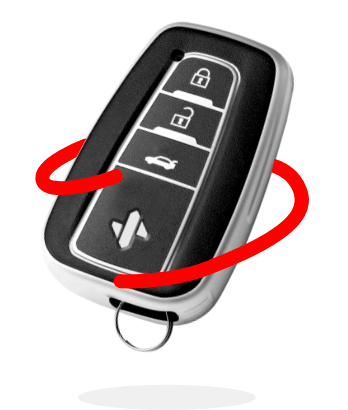Are you looking for protection against the unknown? Worried about what might happen if something unexpected comes up? If so, an insurance binder may be just what you need!
Insurance binders provide a quick and hassle-free way to secure temporary coverage while the insurer completes your permanent policy. In short, with an insurance binder, you can fret less and focus more on taking care of the important things in life. Let’s inspect what exactly an insurance binder is, when it’s necessary, and how it might benefit you.
WHAT IS AN INSURANCE BINDER?
An insurance binder can be a confusing concept without the right guidance. As an essential part of insurance coverage, it’s crucial to understand what an insurance binder is and when you need one.
An insurance binder is a brief document issued by an insurance company that serves as proof of coverage until the carrier fully issues your policy. It provides confirmation that your coverage has been granted for specific dates — usually for 30 days — or until they’ve issued the full policy.
What Does An Insurance Binder Look Like?
Depending on the insurer, this document may include information such as policy numbers, types of coverages, effective dates, limits, deductibles, premium due dates, and other pertinent information about the policyholder and insured property.
It’s important to note that some states may require formal binders for certain kinds of policies before they can take effect. For example, most states mandate that auto liability policies have binders before they can become active — which means if you are purchasing an auto policy, you’ll probably need a binder regardless of whether you are buying from a new insurer or renewing with your current one.
It’s also worth noting that not all insurers issue binders; some may issue declaration pages instead until the insurer issued the full policy and activated it.
When Do You Need an Insurance Binder?
You typically need an insurance binder when you’re applying for coverage with a new insurer or changing your existing policy — such as increasing coverage limits or adding additional drivers — with your current carrier.
Once you’ve been granted basic coverage and are issued the binder to confirm, it acts as proof of protection until the full auto or home insurance policy has been issued and paid for in full (if applicable).
If you’re renewing your policy with your current insurer, then it’s possible that you won’t need a binder, since there won’t be any major changes being made to your existing coverage. However, in most cases, it’s best to contact your agent directly to determine whether you will require one for renewal.
How Long Is An Insurance Binder Good For?
It’s important for homeowners and vehicle owners to understand that insurance binders typically provide limited coverage and may not include full protection in the event of an incident.
Home and auto insurance binders are a short-term solution to ensure your property is covered within a certain amount of time. If you haven’t secured longer-term coverage for your home or car, the binder will typically expire within 30 to 90 days from the start date. After expiration, the binder will no longer protect homeowners or vehicle owners if a disaster strikes.
As always, research your insurance options to make sure you always have up-to-date coverage at the best possible rates. Additionally, make sure you have your new insurance policy available via a declaration page before your insurance binder expires.
WHAT’S THE DIFFERENCE BETWEEN AN INSURANCE DECLARATION PAGE & AN INSURANCE BINDER?
If you’re new to the concept of insurance binders, you might be wondering what the difference is between it and an insurance declaration page.
An insurance declaration page summarizes an individual’s coverage for their property and the accompanying cost. It outlines who, what, where, and how much coverage is being provided by the insurer. The declaration page also typically includes details about the property owner that insured it, as well as information about premiums, deductibles, and coverage limits. This page is often called the face page of any insurance policy.
Meanwhile, an insurance binder is a contract that binds an insurer to an individual purchasing the insurance. It serves as proof of the final policy before it’s finalized.
Insurance Binder vs. Declaration Page
While both records are integral for securing adequate protection for one’s exposure to risk related to a residence or vehicle, they have individual purposes — one serves as proof of a policy being issued, while the other contains all the details of an individual’s policy.
Understanding what an insurance binder is and when it’s needed can help ensure smooth transitions between policies if you make changes or if you move to another insurer altogether. Whether it’s validating car registration documents at the DMV or providing physical damage protection for your home while waiting on full policies to be issued by insurers, having access to these documents can save time and money while ensuring uninterrupted service during transitions between policies!
If you’re ever in doubt about getting an insurance binder or if it’s necessary for certain situations like auto policy renewal processes, contact your agent directly so they can provide further insight into what kind of documentation would be suitable based on individual needs.
If you need help finding the best insurance coverage for the best price, start by speaking to a SimplyIOA agent at 833.872.4467 or get an insurance quote online now.










